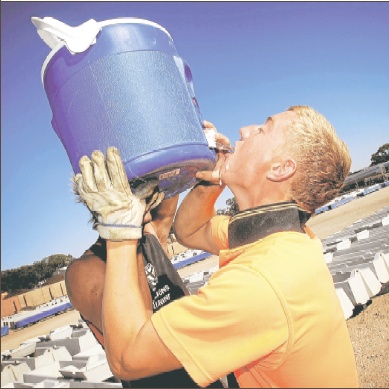Study compares heat risks
 A study has compared the heat risks of indoor service and outdoor maintenance work.
A study has compared the heat risks of indoor service and outdoor maintenance work.
Australian workers in the service industry may face more significant challenges during the scorching summer days than their outdoor maintenance counterparts, according to the study.
Researchers compared the experiences of 24 mining employees - 12 indoor service workers and 12 outdoor maintenance workers.
While the outdoor workers could adjust their work pace, the indoor employees had a fixed workload during their shifts.
The study revealed that outdoor workers were less dehydrated and reported lower levels of fatigue and discomfort. However, there were no significant differences in physical or cognitive function between the two groups.
This finding underscores the need for increased attention to the potential health risks associated with fixed work schedules.
In the Australian mining industry, working in high temperatures is common but can have adverse effects on cognitive function, productivity, and physical health.
The study aimed to compare the thermal strain experienced by maintenance and service workers during the summer season.
Maintenance workers predominantly worked outdoors in temperatures of approximately 33.9°C with 38 per cent relative humidity, while service workers had fixed schedules and worked indoors intermittently (about 64 per cent of their shift) and outdoors (around 36 per cent of their shift) in temperatures averaging 29.5°C and 35.4°C, respectively, with varying humidity levels.
Workers underwent assessments at the beginning (day 2/3), middle (day 7/8), and end (day 13/14) of their 11–12 hour shifts.
Service workers completed more steps, had higher heart rates, and reported greater perceived exertion, thermal discomfort, thermal sensation, and fatigue compared to maintenance workers.
Service workers were also less hydrated, as indicated by higher urinary specific gravity values, both post- and pre-shift.
However, core temperature, working memory capacity, processing speed, and manual dexterity did not significantly differ between the two groups.
This study highlights the importance of educating workers in hot environments about proper hydration practices and providing more scheduled rest breaks during shifts, particularly for those unable to adjust their work intensity.
Experts say employers should closely monitor workers for signs of heat-related illnesses, discomfort, and fatigue to ensure their safety and well-being.
The full study is accessible here.







 Print
Print